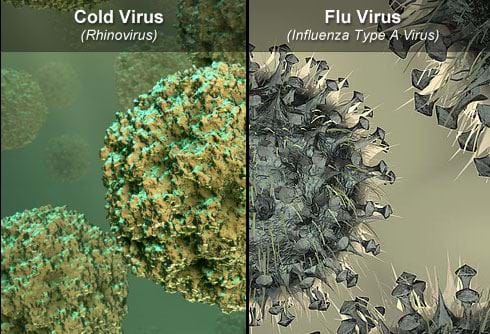It’s important to know the difference between flu and cold symptoms. A cold is a milder respiratory illness than the flu. While cold symptoms can make you feel bad for a few days, flu symptoms can make you feel quite ill for a few days to weeks. The flu can also result in serious health problems such as pneumonia and hospitalizations.

But it can be difficult to tell whether it is a cold or flu on symptoms alone, as they can be quite similar.
Cold symptoms commonly include a runny nose, sore throat, watery eyes, headache, sneezing and cough. While these can make you feel quite miserable, colds are considered mild compared to the flu, so most you will most likely recover after a few days to a week. The average person can expect about three colds a year, although if you’re around small children, who tend to get more, you might get more too.
Flu symptoms include chills and fever, muscular aches and pains, tiredness, headache, sore throat, and cough. These tend to be more severe and likely to keep you in bed for at least a few days. Sometimes they can leave you feeling pretty terrible for a couple of weeks. (In children, flu can also trigger abdominal pain, nausea, vomiting and diarrhoea.)
The best way to prevent colds and flu is frequent hand washing with warm soapy water for at least 20 seconds. In addition, you can also get a flu vaccination to prevent seasonal influenza. You may be eligible for a free annual influenza vaccine. This includes those at higher risk of complications from flu, including those over 65, pregnant women, most Aboriginal and Torres Strait Islanders and people with chronic heart or lung conditions.
Find out more about influenza vaccinations here or more cold and flu information.



